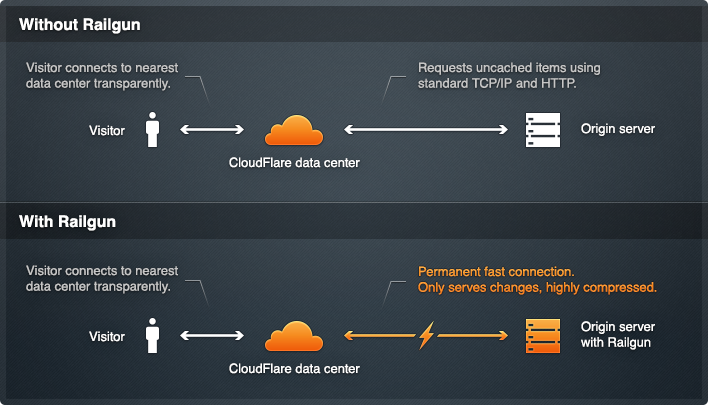2020Media.com is happy to announce a new partnership with CloudFlare, the web’s easiest performance and security solution. As a CloudFlare Optimised Partner, we deliver their simple and effective solution to help protect and accelerate your website. Once your website joins the CloudFlare community, it loads twice as fast and is protected from a range of online threats.
To learn more about CloudFlare, you can watch the introductory video
We are delighted to offer this great service to you and help make your website faster and safer.
CloudFlare Railgun
As a CloudFlare Optimized Partner, we are delighted to offer the CloudFlare Railgun™ technology to all our customers as an upgrade option. Railgun is CloudFlare’s latest performance optimization technology that gives you significant improvements in site load times.
Railgun ensures that the connection between our network and the CloudFlare network is as fast as possible. Railgun achieves a 99.6% compression ratio for previously uncacheable web objects by using techniques similar to those used in the compression of high-quality video. The average website can expect a 1.43x performance increase.

Although the dynamic web is not cacheable, it is also not changing quickly. That means that from moment to moment there’s only a small change between versions of a page. CloudFlare Railgun uses this fact to achieve very high rates of compression. This is very similar to how video compression looks for changes from frame to frame; Railgun looks for changes on a page from download to download.
We have made it simple for our customers to get the benefits of Railgun – contact your account manager and ask for a free trial.




